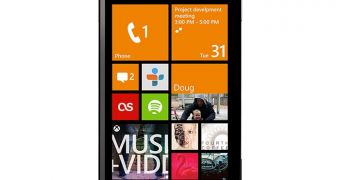Windows Phone 8, the latest mobile operating system flavor coming from Microsoft, arrives on shelves with a nice range of enhancements over previous iterations of the platform, including an improved keyboard.
According to the company, one of the main changes in the new operating system flavor is Word Flow, which was meant to provide corrections and suggestions on Windows Phone 8 devices.
According to Microsoft, the auto-correction skills of Windows Phone are around 94 percent accurate, on average, right from the start.
“But we all have our own communication style, so Word Flow is also designed to be a keen student of your writing habits and what you care about. It’s always learning, so it can help personalize the suggestions and corrections to suit each individual person,” Jason Grieves notes in a blog post.
He also explains that the dictionary in Windows Phone 8 includes not only words, but also data about how people use these words in their messages.
“The Office team has been researching commonly-used words for more than 20 years to power similar features in Word and Outlook, and they partnered with us to build our first dictionaries in Windows Phone 7,” said post explains.
However, this does not mean that there won’t be unwanted auto-corrections, one reason being the fact that the dictionary might not always be relevant to what the user is typing.
At the same time, the suggestions are based on the words written before, which means that some words are easy to guess based on words before them, yet this does not mean that users always want to write what’s being suggested.
“Windows Phone 8 is designed to solve both of these problems by taking into greater account how real people use language on their phones. In the real world, people use slang, nonstandard spelling, and other casual shortcuts. Thus we needed different dictionaries than what you might find in Microsoft Word,” Grieves explains.
The Redmond-based software giant looked at Twitter, Wikipedia and other similar online resources to make an idea of how people use words today, and designed the dictionary based on these tendencies.
Another issue that was taken into consideration was the so called “fat finger” problem, which involves the user’s finger covering more than one letter on the screen, and which could result in typos. The video below should provide a few more details on the matter.
“Finally, the most important part of the phone’s dictionary starts out blank when you buy the phone: the custom dictionary,” the aforementioned blog post reads.
“That’s where we store on your phone the words and phrases that you use. As you type on your phone, it learns how commonly you use language. We then use the custom dictionary in all of the places we describe above—suggestions, corrections, keyboard hit-target adjustment—for improved typing accuracy.”

 14 DAY TRIAL //
14 DAY TRIAL // 